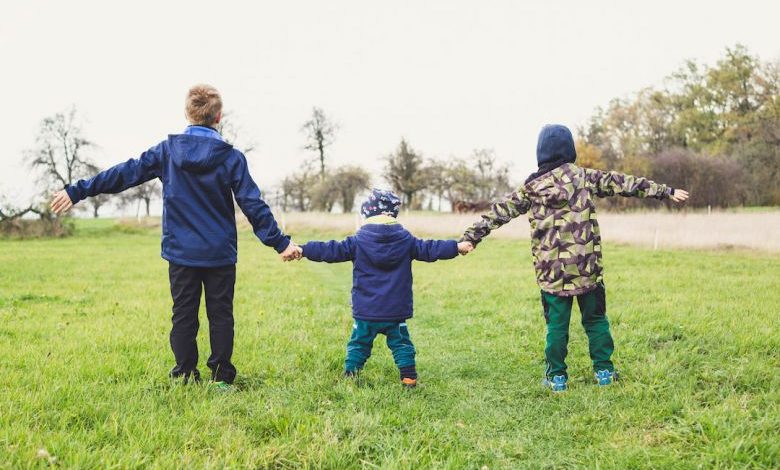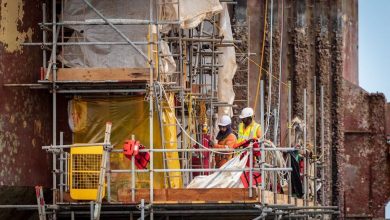How to Create a Safe Play Area for Children in the Backyard?

Creating a Safe Play Area for Children in the Backyard
When it comes to creating a safe play area for children in the backyard, there are a few key considerations to keep in mind. From choosing the right equipment to ensuring a safe environment, here are some helpful tips for setting up a play area that is both fun and secure.
Selecting the Right Equipment
The first step in creating a safe play area for children is selecting the right equipment. When choosing play equipment, it is important to consider the age and abilities of the children who will be using it. Look for equipment that is age-appropriate and designed for the specific needs of children.
Swings, slides, and climbing structures are popular choices for backyard play areas. When selecting these items, make sure they are sturdy and well-constructed. Check for any sharp edges or loose parts that could pose a safety hazard.
In addition to play equipment, consider adding other elements to the play area such as sandboxes, water tables, or small playhouses. These can provide additional opportunities for imaginative play and creativity.
Ensuring a Safe Environment
Creating a safe play area goes beyond just choosing the right equipment. It is also important to ensure a safe environment. Here are a few key considerations:
1. Fencing: Install a sturdy fence around the play area to prevent children from wandering off or accessing potentially dangerous areas. Make sure the fence is at least four feet high and has a self-latching gate.
2. Soft Surfaces: Use soft surfaces such as rubber mulch, sand, or grass underneath and around equipment to cushion falls. Avoid using concrete or asphalt, as they can cause serious injuries if a child falls.
3. Clear the Area: Remove any debris, rocks, or sharp objects from the play area. Trim back branches or plants that could pose a hazard to children.
4. Sun Protection: If the play area is exposed to direct sunlight, provide shade options such as umbrellas or a canopy to protect children from harmful UV rays.
5. Water Safety: If you have a pool or water feature nearby, ensure it is properly fenced off and secured. Pools should have a self-closing and self-latching gate, and children should never be left unattended near water.
Encouraging Active Supervision
While creating a safe play area is important, it is equally important to encourage active supervision. No matter how safe the environment, accidents can still happen. Here are some tips for ensuring children are properly supervised:
1. Keep an Eye on Children: Assign a responsible adult to supervise the play area at all times. This person should actively watch the children and intervene if any unsafe behaviors are observed.
2. Set Clear Rules: Establish and communicate clear rules for using the play area. Teach children about safe play behaviors, such as not pushing or roughhousing on equipment.
3. Educate Older Siblings: If older siblings will be supervising younger children, make sure they understand their responsibilities and are capable of effectively supervising.
4. Check Equipment Regularly: Regularly inspect play equipment for any signs of wear or damage. Repair or replace any broken or unsafe parts immediately.
Promoting Safe Play
In addition to creating a safe play area and ensuring active supervision, it is important to promote safe play behaviors. Encourage children to engage in safe and responsible play by:
1. Teaching Proper Use of Equipment: Teach children how to properly use each piece of play equipment. Show them how to climb, swing, and slide safely.
2. Encouraging Sharing and Cooperation: Teach children to take turns and share equipment. Encourage cooperation and discourage aggressive or unsafe behaviors.
3. Educating on Stranger Danger: Teach children about the importance of not talking to or accepting anything from strangers. Establish clear boundaries and rules for interacting with unfamiliar individuals.
4. Providing Age-Appropriate Challenges: As children grow and develop, provide age-appropriate challenges to keep them engaged and stimulated. This can help prevent boredom and reduce the risk of unsafe behaviors.
Conclusion
Creating a safe play area for children in the backyard requires careful consideration and planning. By selecting the right equipment, ensuring a safe environment, encouraging active supervision, and promoting safe play behaviors, you can create a play area that is both fun and secure. Remember, the safety of children should always be the top priority, and regular maintenance and inspections are crucial to ensuring their well-being.




